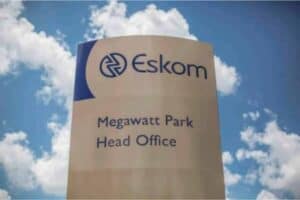SA has ‘the most sophisticated data centre ecosystem in Africa’ – and an ‘enormous need for clean energy’ to power artificial intelligence.

US company X-energy, which has ambitions to build the first small modular reactor (SMR) funded privately in South Africa, just got a game-changer boost from tech giant Amazon.
This is the view of André Pienaar, CEO of the investment firm C5 Capital. Pienaar was speaking on behalf of C5 as an investor in X-energy.
Speaking to Moneyweb from London, Pienaar – who grew up and started his career in South Africa – said the Amazon investment is driven by the enormous need for clean energy to power artificial intelligence.
“One AI enquiry uses 10 times the energy required for a Google enquiry.”
ALSO READ: Will R9bn nuclear reactors lower SA’s energy costs?
The deal
There are three elements to Amazon’s involvement with X-energy:
- An upfront $300 million (R5.3 billion) investment that will give Amazon a shareholding in X-energy, the size of which has not been disclosed.
- An undertaking that Amazon will work with X-energy to develop 4 500MW of SMR to power Amazon data centres at different locations. A typical plant consists of four units with a total output of 320MW, which means Amazon will contribute additional funds for about 14 new SMRs.
- Pienaar says Amazon brings the exceptional ability to build data centres and computer power cost-effectively. This ability will now be utilised to industrialise the manufacturing of SMRs worldwide.
Pienaar says it is the latter aspect “that excites me most”.
“The SMR industry needs industrialists to develop production lines to build reactors in the same way plane engines are built.”
He anticipates the democratising of nuclear power. In the past nuclear came in massive structures that belonged to government, but in future private companies will be able to provide their own power supply as reactors become smaller and more affordable.
“They are becoming smaller – just like computers, with us having more computer power in our phones now than the Appollo had when it went to the moon.”
ALSO READ: Nuclear energy: Social catastrophe or the energy of the future?
SA has special appeal
Pienaar says C5 Capital has completed its feasibility study for the development of a privately funded SMR in South Africa.
“South Africa has a huge advantage over most other countries, because of its existing nuclear capacity.”
At least 80 countries worldwide and several in Africa have nuclear ambitions for civilian use, but it is a steep mountain to climb.
Pienaar says to develop nuclear capacity, a country needs the regulatory framework, the expertise, funding, and it must become part of the value chain.
“South Africa is already there. It has built a successful nuclear programme over decades that is worth billions. Energy underpins everything. It is the biggest factor in economic and human development. South Africa has produced the cheapest electricity at Koeberg, which makes [up] a significant portion of the country’s supply and 80% of that of the Western Cape. The plant just underwent a life-extension for another 20 years.”
Pienaar says South Africa has a very skilled nuclear workforce that is sought after in other countries. “South Africans recently played a key role in building a nuclear capability in the UAE and they are now helping to build SMRs in the US.”
In addition, South Africa has built a very valuable nuclear value chain and has abilities to process uranium, build and operate reactors, and use the technology in other applications like nuclear medicine.
Among the most important is the existing regulatory framework with regulations and permits developed for SMRs in the abandoned nuclear pebble-bed programme.
ALSO READ: Here comes the nuclear IPP in SA
Data centres
The opportunity for South Africa is even bigger in the context of data centres, says Pienaar.
“South Africa has the most sophisticated data centre ecosystem in Africa. It has more than 37 data centre regions in comparison to Kenya’s 13 and Nigeria’s 11. The digital economy in South Africa and Africa is one of the fastest growing in the world. All the major US cloud technology companies are invested in digital infrastructure in South Africa – Google, Oracle, Microsoft and Amazon.”
With these data centres as potential offtakers, he believes there is a clear case for SMR development in South Africa.
The next phase, with the feasibility study completed, is to agree with the South African government on a formal development plan to deliver nuclear energy directly to the consumer.
“We must agree with government on an investment plan. We’ll bring the reactor as well as new capital.”
ALSO READ: Minister Ramakgopa withdraws nuclear procurement gazette
Ramokgopa to meet the team, inspect US facility
He says X-energy is meeting with government. Minister of Electricity and Energy Kgosientsho Ramokgopa, who landed in Washington in the US on Thursday, will visit the X-energy plant “for a braai with the South African experts” working for the company.
Ramokgopa’s office confirmed that he will visit the plant and inspect the X-energy facility and capabilities.
The minister recently said he had interacted with Chris Opperman (operating partner at C5 Capital for Africa and the Middle East) and others formerly from the South African nuclear industry and now leading nuclear development in the US. “They want to come back.”
Ramokgopa has made it clear that the country’s planned procurement of 2 500MW of new nuclear, which is expected to include an SMR, will be transparent and led by science, rather than lobbyists.
X-energy is currently building its first four-unit Xe-100 SMR facility for Dow Chemicals at one of its Gulf Coast sites in the US. The project is supported by the US Department of Energy.
This article was republished from Moneyweb. Read the original here.






